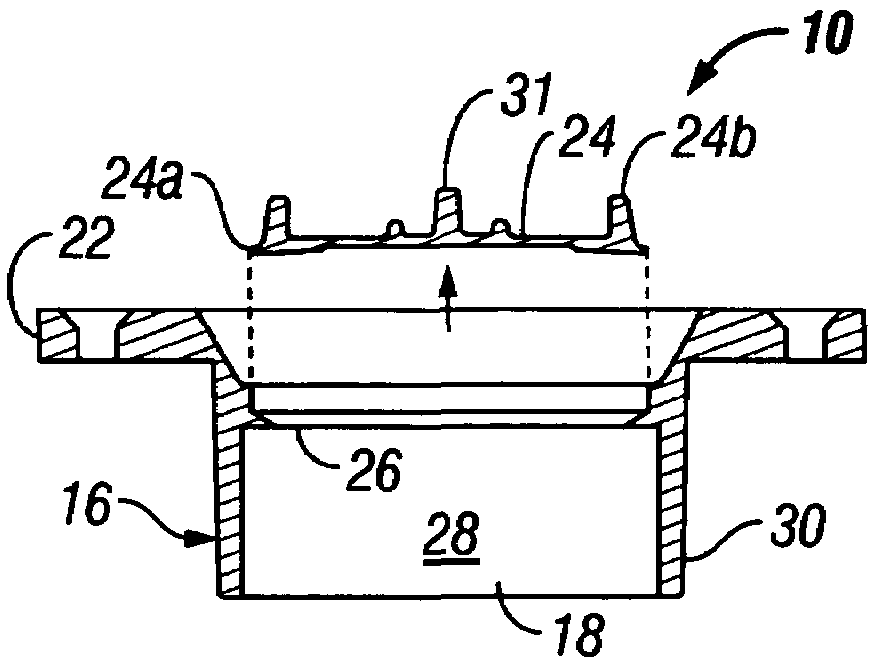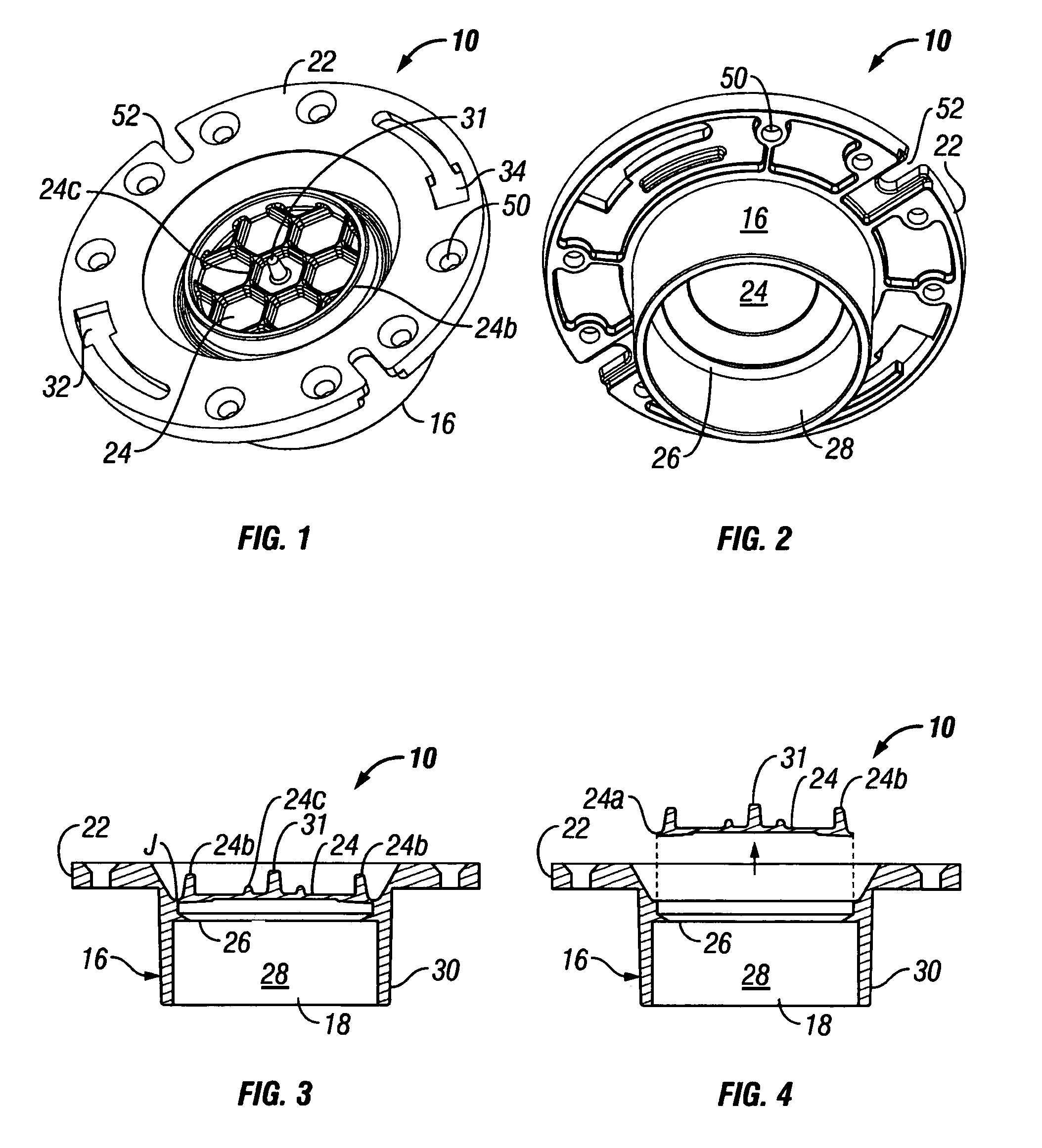Closet flange with knockout retainer
a technology of retainer and flange, which is applied in the field of flanges, can solve the problems of large blockage, debris naturally falling into the drain pipe, and the drain pipe remains unsealed,
- Summary
- Abstract
- Description
- Claims
- Application Information
AI Technical Summary
Benefits of technology
Problems solved by technology
Method used
Image
Examples
Embodiment Construction
[0015]Referring to FIG. 5, a plastic closet flange 10 is provided for coupling the base of a conventional porcelain toilet 12 to a plastic drain pipe 14. A main generally cylindrical body portion 16 (FIG. 2) is dimensioned for connection to the upper end of the drain pipe 14 and has a through bore 18 (FIG. 3) for communicating with the interior 20 (FIG. 5) of the drain pipe 14. An annular attachment flange portion 22 (FIG. 1) extends radially outward from an upper end of the cylindrical body portion 16 and is configured for connecting to the flat underside of the base of the toilet 12. A generally disc-shaped knockout 24 temporarily seals the through bore 18 and is removable by breaking away a peripheral edge 24a (FIG. 4) of the knockout 24. A retainer 26 (FIGS. 2 and 3) extends radially inward from an inner wall 28 of the cylindrical portion 16 below the knockout 24 and is configured to prevent the knockout 24 from falling down the through bore 18 and down the interior 20 of the dr...
PUM
 Login to View More
Login to View More Abstract
Description
Claims
Application Information
 Login to View More
Login to View More - R&D
- Intellectual Property
- Life Sciences
- Materials
- Tech Scout
- Unparalleled Data Quality
- Higher Quality Content
- 60% Fewer Hallucinations
Browse by: Latest US Patents, China's latest patents, Technical Efficacy Thesaurus, Application Domain, Technology Topic, Popular Technical Reports.
© 2025 PatSnap. All rights reserved.Legal|Privacy policy|Modern Slavery Act Transparency Statement|Sitemap|About US| Contact US: help@patsnap.com



